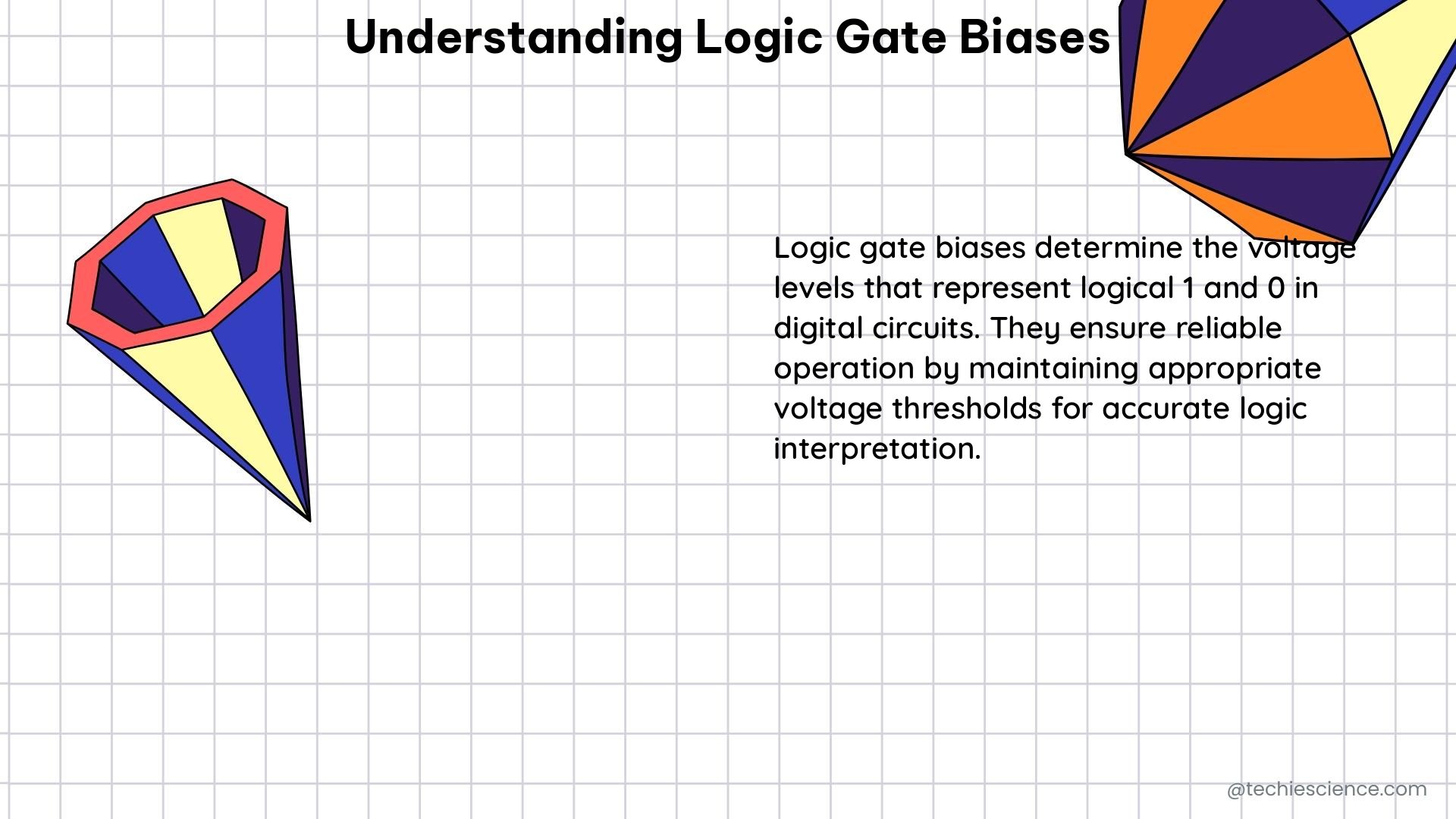Understanding the biases associated with logic gates is crucial in the field of electronics and computer science, particularly in the context of quantum computing. This comprehensive guide delves into the technical details and specific data points that shed light on the error rates, thresholds, and overhead associated with different types of logic gates.
Biased-Noise Qubits and Error Correction Thresholds
In the realm of quantum computing, biased-noise qubits have been shown to have a higher code capacity threshold for error correction compared to qubits without structured noise. The probability of a logical error for a gadget using biased-noise qubits is given by the equation:
P = Aε^2 + Bε^4
Where:
– P is the probability of a logical error
– ε is the bare error rate
– A and B are constants that depend on the specific implementation of the gadget
The threshold error rate, which is the value of ε at which the probability of a logical error becomes significant, is determined by the point at which the P curve intersects a line with slope 1 on a log-log plot. For a gadget with a bias of η = 10^4, the threshold error rate is ε = 7.5 × 10^(-3).
Overhead and Target Logical Error Rates

In addition to the threshold error rate, the overhead required to achieve a target logical error rate is also an important consideration. A study found that a specific gadget requires less overhead to reach a target error rate of 0.67 × 10^(-3) compared to a gadget in a different study. The circuit volume required for the gadget in the study is:
8(n-1)r + 2n
Where:
– n is the number of qubits
– r is the number of repetitions
In contrast, the circuit volume required for the gadget in the other study is:
7nr
This means that the gadget in the study has a smaller overhead for a given target error rate.
Physical Implementation and Bias-Preserving Gates
The physical implementation of logic gates can also have a significant impact on the performance and error characteristics of the gates. In the case of quantum computing, the availability of bias-preserving CX gates can simplify the gadgets needed to implement fault-tolerant logical gates. This can lead to:
- An increase in the threshold by a factor of ≳2
- A reduction in the overhead by a factor of ≳5 for the repetition code gadgets
Factors Affecting Logic Gate Biases
Several factors can contribute to the biases observed in logic gates, including:
-
Transistor Characteristics: The physical properties of the transistors used in the logic gates, such as their size, doping, and mobility, can affect the biases.
-
Circuit Design: The way the logic gates are designed and interconnected within a circuit can introduce biases.
-
Power Supply Variations: Fluctuations in the power supply voltage can lead to biases in the logic gates.
-
Temperature Effects: Changes in temperature can alter the characteristics of the transistors and introduce biases.
-
Electromagnetic Interference: External electromagnetic fields can induce biases in the logic gates.
-
Fabrication Defects: Imperfections in the manufacturing process can result in biases in the logic gates.
Measuring and Characterizing Logic Gate Biases
To understand and mitigate the effects of logic gate biases, it is essential to measure and characterize them. Some common techniques include:
-
Voltage Transfer Characteristics (VTC) Measurement: This involves measuring the output voltage of a logic gate as a function of the input voltage, which can reveal the biases.
-
Noise Margin Measurement: Measuring the noise margins of a logic gate can provide insights into the biases and their impact on the gate’s performance.
-
Transient Response Analysis: Analyzing the transient response of a logic gate can help identify biases and their effects on the gate’s switching behavior.
-
Monte Carlo Simulation: Performing Monte Carlo simulations can help model the statistical variations and biases in logic gates due to process, voltage, and temperature (PVT) variations.
-
Experimental Characterization: Physical testing and characterization of logic gates using specialized equipment, such as logic analyzers and oscilloscopes, can provide direct measurements of the biases.
Mitigating Logic Gate Biases
To mitigate the effects of logic gate biases, various techniques can be employed, such as:
-
Circuit Design Optimization: Optimizing the circuit design, including the transistor sizing and layout, can help reduce the biases.
-
Power Supply Regulation: Implementing robust power supply regulation can minimize the impact of power supply variations on the logic gate biases.
-
Temperature Compensation: Incorporating temperature compensation circuits or techniques can help counteract the effects of temperature changes on the logic gate biases.
-
Shielding and Filtering: Employing shielding and filtering techniques can reduce the impact of electromagnetic interference on the logic gate biases.
-
Redundancy and Error Correction: Incorporating redundancy and error correction mechanisms, such as those used in quantum computing, can help mitigate the effects of logic gate biases.
By understanding the technical details and specific data points related to logic gate biases, electronics and computer science professionals can design more robust and reliable systems, particularly in the context of quantum computing and other advanced applications.
References:
- Combinational Logic – ScienceDirect
- Biased-noise qubits for universal fault-tolerant quantum computation – NCBI
- Fault-tolerant quantum computation with biased-noise hardware – Royal Society Publishing

The lambdageeks.com Core SME Team is a group of experienced subject matter experts from diverse scientific and technical fields including Physics, Chemistry, Technology,Electronics & Electrical Engineering, Automotive, Mechanical Engineering. Our team collaborates to create high-quality, well-researched articles on a wide range of science and technology topics for the lambdageeks.com website.
All Our Senior SME are having more than 7 Years of experience in the respective fields . They are either Working Industry Professionals or assocaited With different Universities. Refer Our Authors Page to get to know About our Core SMEs.